December 2024
SOYBEAN PRODUCTION IN SOUTH AFRICA HAS INCREASED NOTICEABLY OVER THE PAST YEARS. A COMBINATION OF IMPROVED YIELDS TOGETHER WITH FAVOURABLE SOYBEAN PRICES, AS WELL AS THE BENEFIT OF INCREASED SOIL HEALTH IN A CROP ROTATION SYSTEM, ARE THE MAIN DRIVERS FOR THE RAPID EXPANSION OF SOYBEAN PRODUCTION.
Soybeans (Glycine max) are one of the most important sources of oil and protein in the world. The production of soybeans is mainly for use in the animal feed industry, driven by the demand for animal protein.
However, the increased input costs also contributed to the expansion of soybeans to the drier and non-traditional soybean production areas. This resulted in the Free State being the largest soybean production area (545 000 ha during the 2023/2024 season).
Soybeans were the second largest grain crop produced during the 2023/2024 season (1 810 790 tons on 1 150 500 ha), with an average yield of 1,57 t/ha. This is much lower than the previous season (2,4 t/ha) due to the severe drought.
LOCALITY
The productivity of soybean cultivars varies from one locality to the other, owing to locality-specific genotype x environment interactions. Soybeans are sensitive to daylight and the prevailing temperature, resulting in the division of the soybean production areas into cool, moderate and warm. This is also why the planting date will influence the length of the growing season of a given cultivar.
Cultivar evaluation trials are an indispensable source of information for farmers, given the yield benefits that accumulate to farmers by virtue of being able to adequately identify cultivars with reasonable adaptability that fit in their localities, to ensure optimum yield and profitability.
When cultivar selections are conducted, it is important to establish which locality has similar climatic conditions and to use these tables representing the same region. See Table 1.
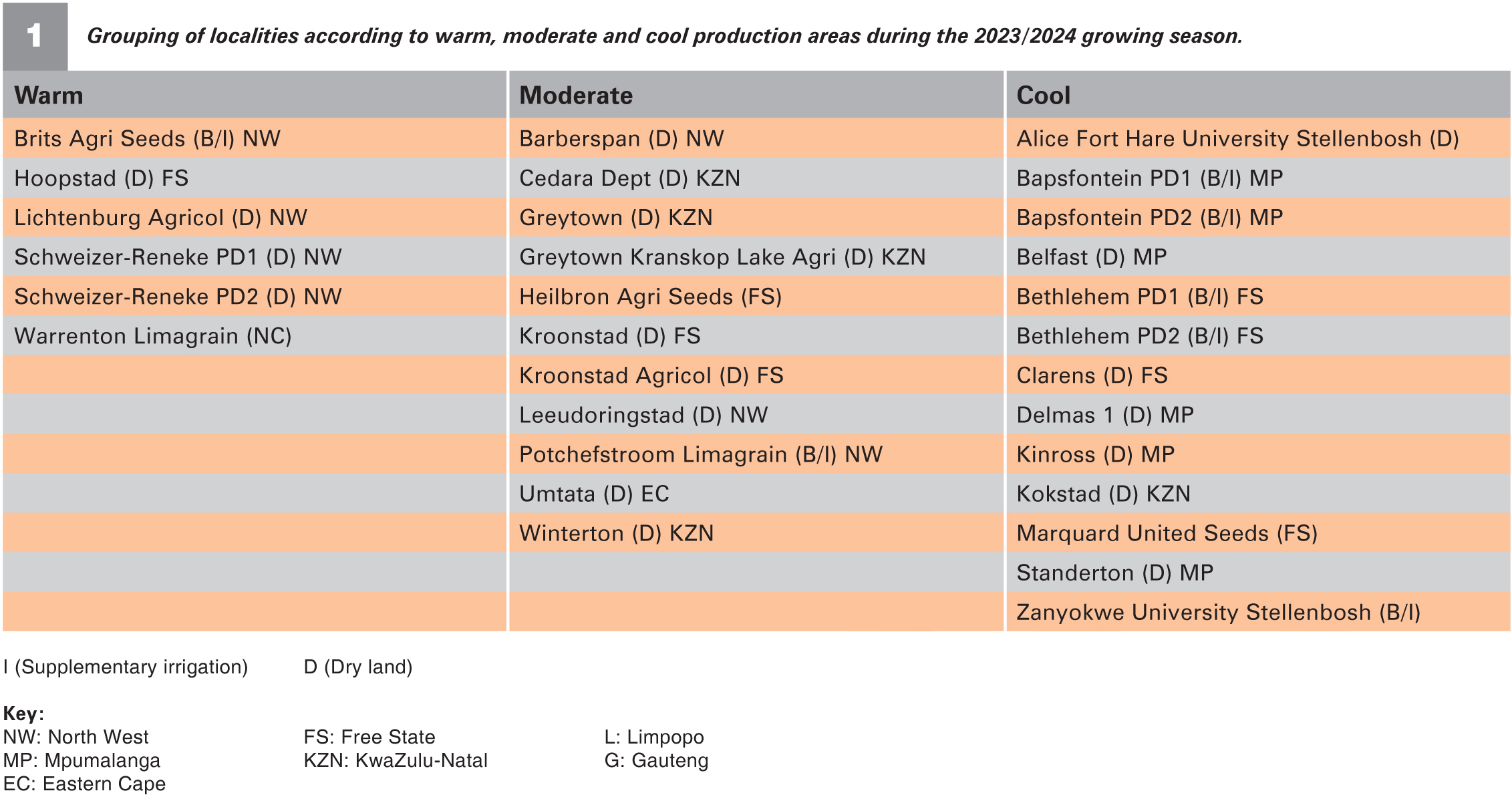
FACTORS TO CONSIDER
A few other important characteristics to consider during cultivar selection are:
Days to 50% flowering and days to harvest: The number of days from planting to flowering is an important and critical stage in the development stage of the soybean plant. The number of days to harvest maturity is used to determine the length of the growing season of a cultivar – however, it is influenced by the climate and planting date.
The pod- and plant height has an impact on the ability to harvest the crop. A relationship exists between the pod- and plant height and the relative length of the growing season. Cultivars with a shorter growing season tend to have lower plant and pod heights compared to longer growing season cultivars under similar growing conditions. Both characteristics are also influenced by production practices, Narrower inter- and intra-row spacing will increase the pod height significantly.
Seed shattering: Tolerance against shattering can play an important role during unfavourable harvesting conditions. Shattering is one of the most challenging aspects in soybean production. Therefore it is recommended to plant a package of different maturity grouping cultivars to stagger the harvesting process.
Standability (lodging) is influenced by the plant height, which tends to increase when overcast weather occurs, as well as extreme wet and windy weather conditions, which can result in a higher lodging percentage of plants. Some cultivars withstand lodging better than others under the same conditions.
The yield indicates the genetic adaptation and suitability of a cultivar that will be planted in a specific area. During the 2023/2024 season, 35 cultivars were included in the National Soybean Cultivar Trials.
It is recommended to use the yield results with the yield probability and stability values for a more accurate cultivar choice (Table 2 as well as Table 3 and 4). Determine for which yield potential recommendations must be made. The next step is to consult the yield probability table at the determined yield potential. From the yield probability table, cultivars with above-average probability values and yield stability should be selected. This will provide the farmer with the best chance for a stable, successful yield.
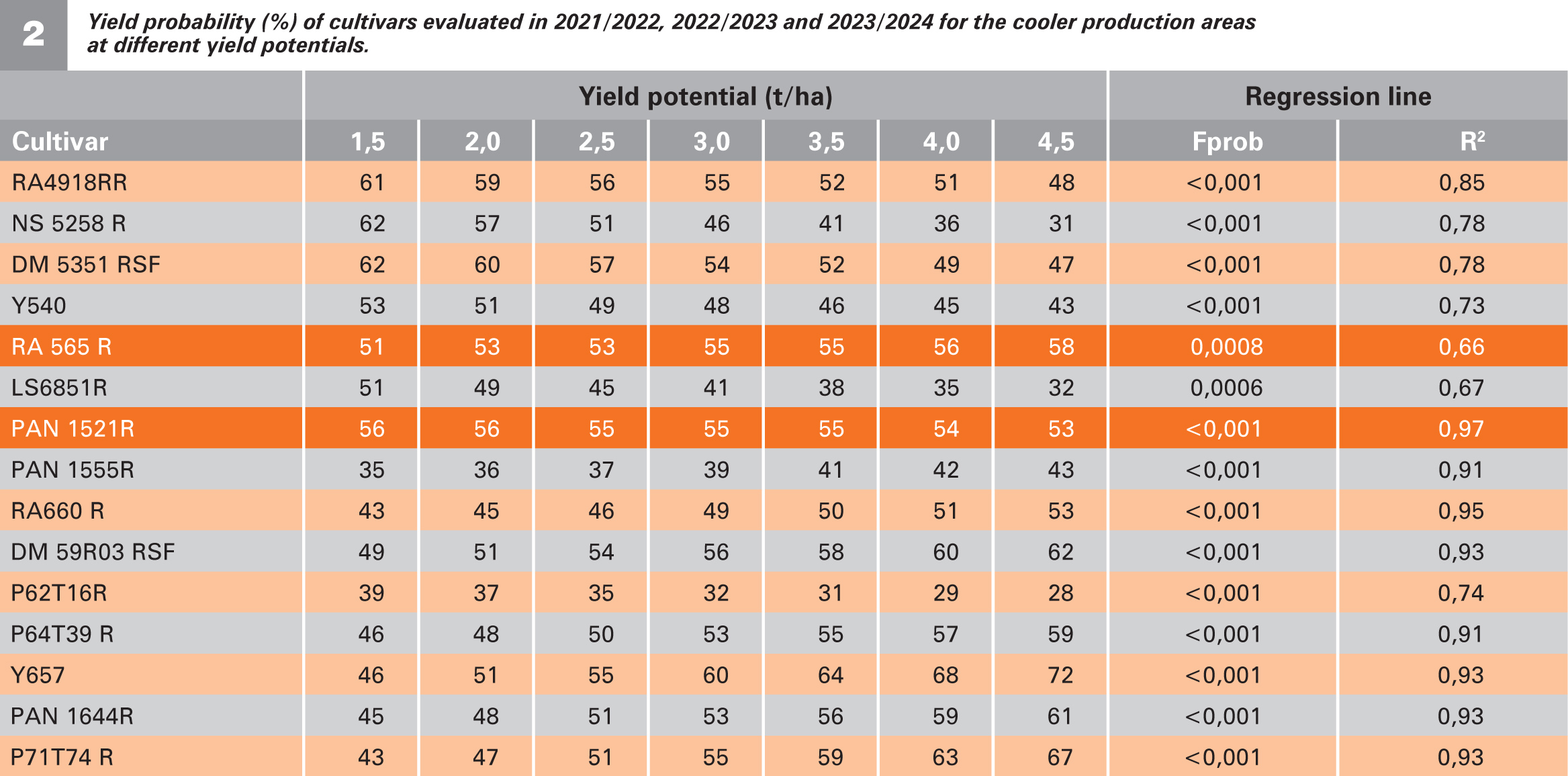
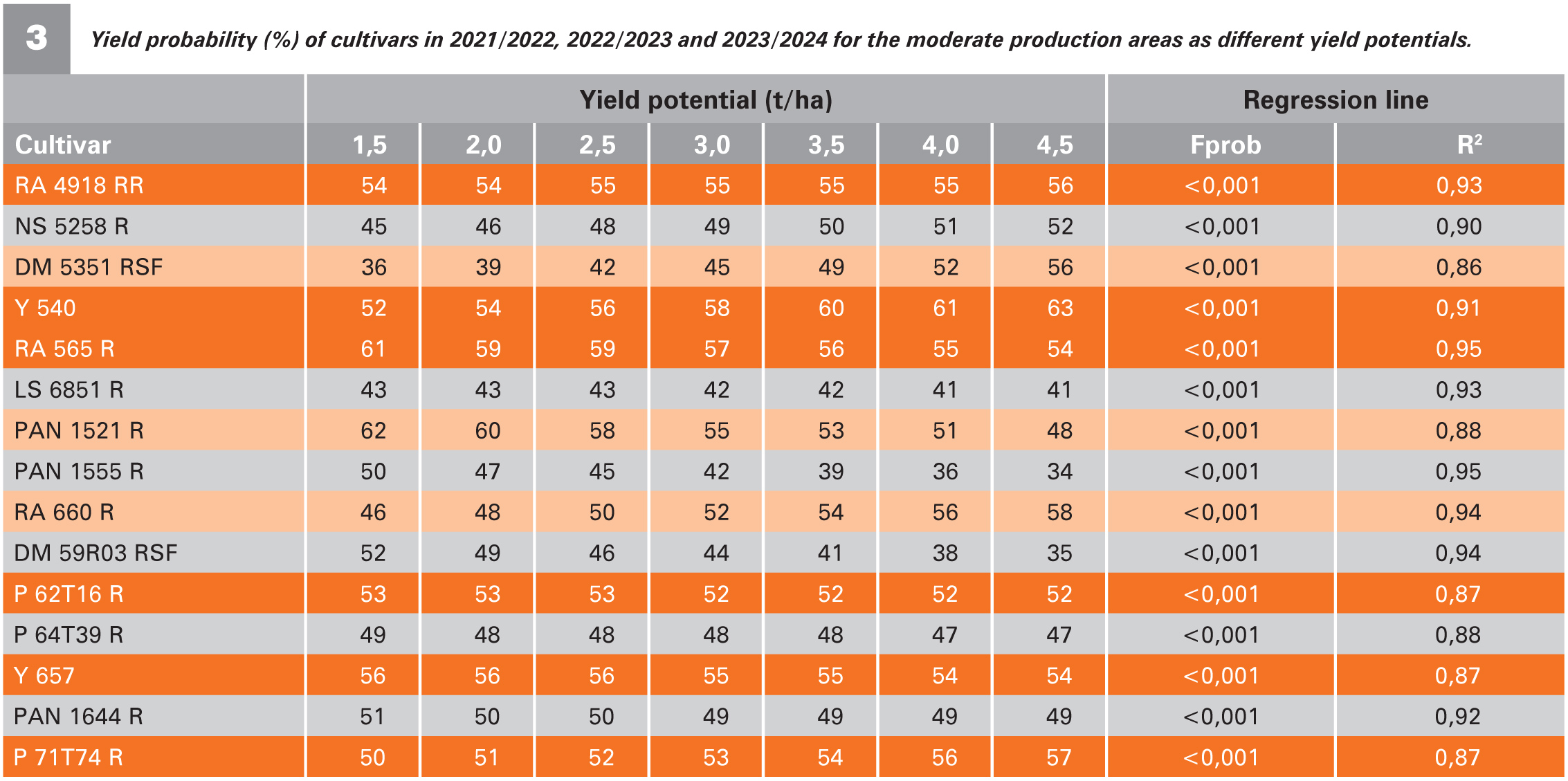

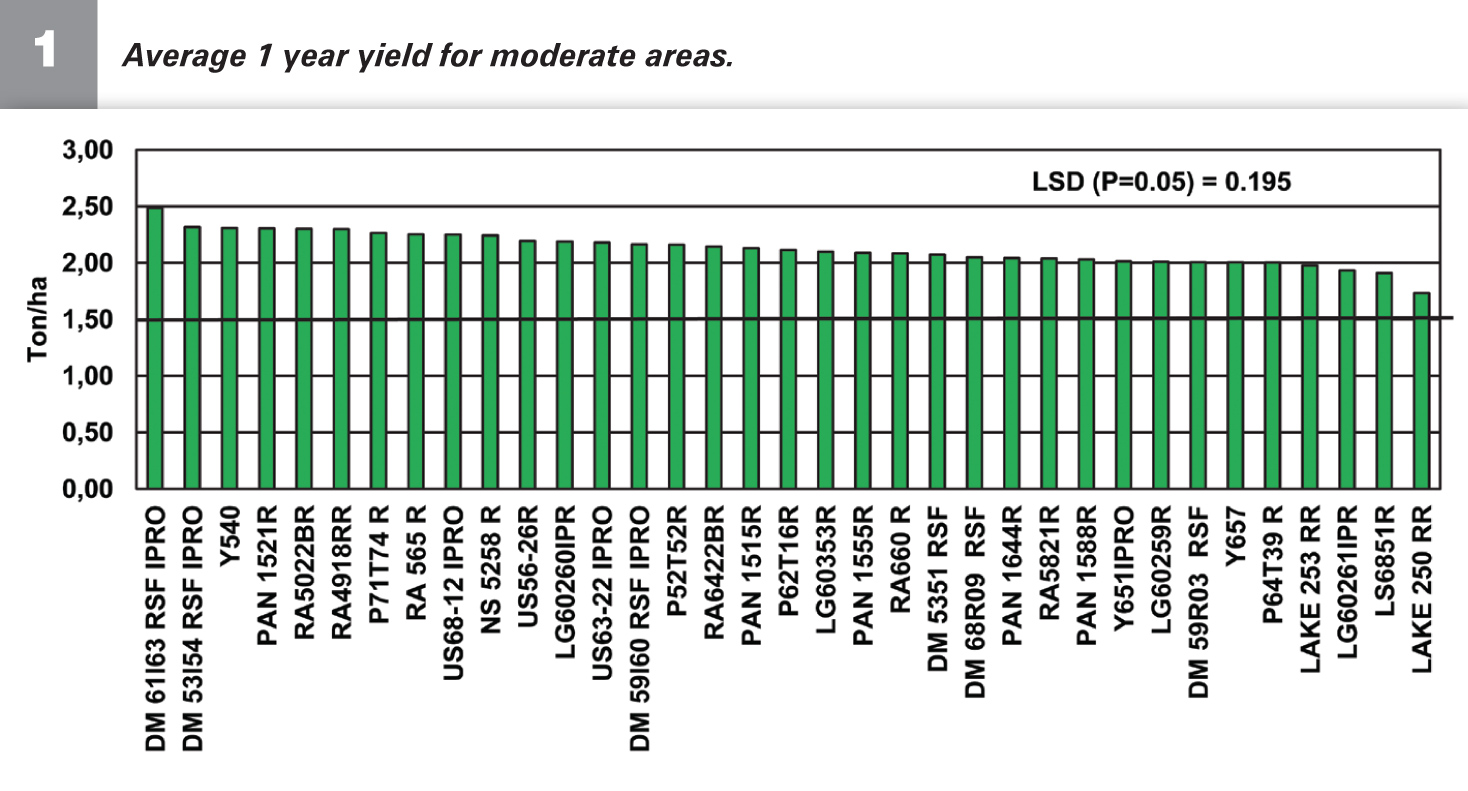
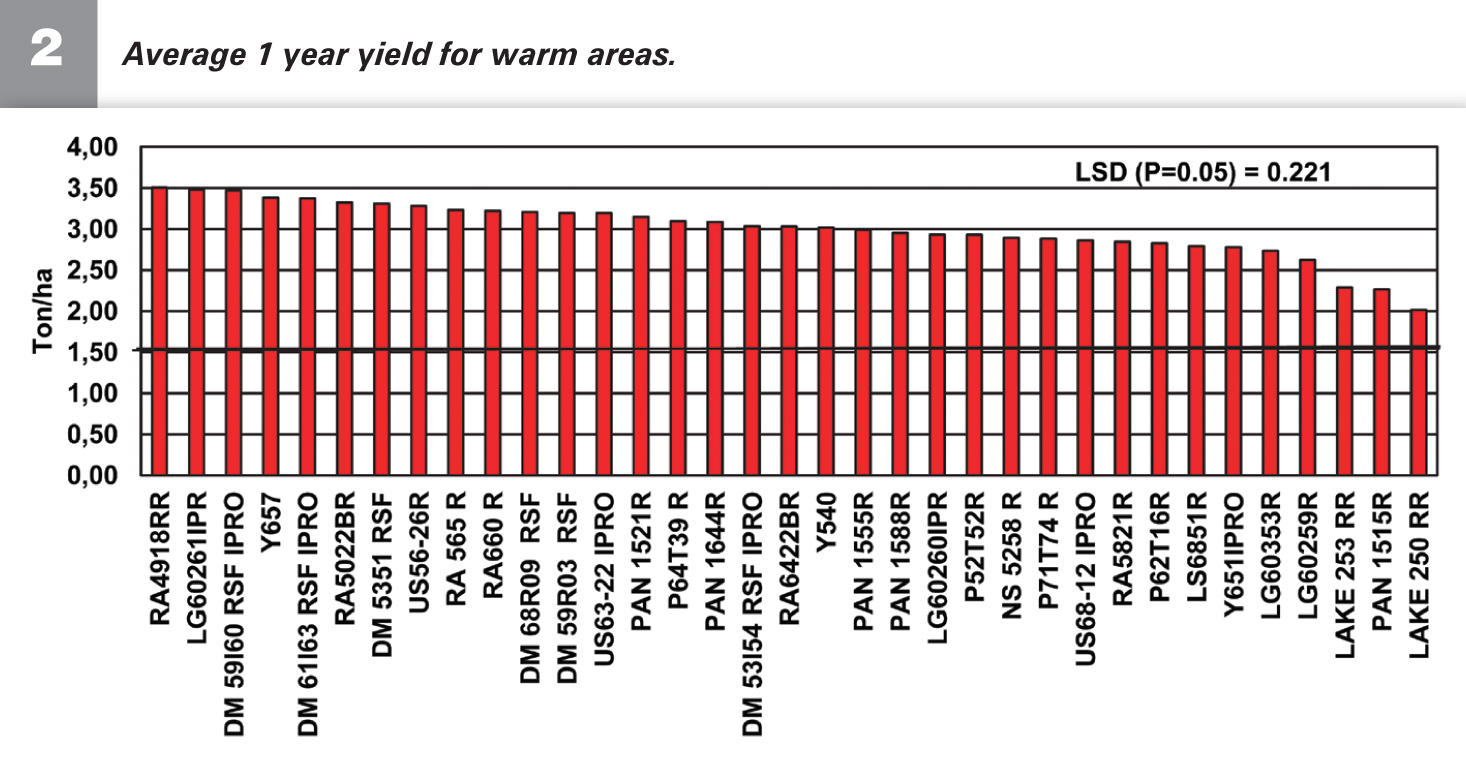 Cultivar stability: The stability of a cultivar is determined by the closer the R2 value is to 1. The smaller the Fprob value (preferably <0,1) is, the more stable the cultivar will be.
Cultivar stability: The stability of a cultivar is determined by the closer the R2 value is to 1. The smaller the Fprob value (preferably <0,1) is, the more stable the cultivar will be.
Yield probability: The yield probability of a cultivar is the potential to achieve an above-average yield at a particular yield potential. For instance, if the yield probability of a cultivar at a particular yield potential equals 60%, the chance to get a yield above the mean of all cultivars is 60%, with a 40% chance of obtaining a yield below the mean. Since new cultivars are introduced and some are removed annually, a multi-season yield probability is only possible for a limited number of cultivars.
Execution of the trials discussed in this article was made possible through the financial support of the Agricultural Research Council (ARC), Oil and Protein Seeds Development Trust (OPDT), the various seed companies, UPL (inoculant) and numerous collaborators who conducted trials. We would like to thank Heila Vermeulen of the ARC-Grain Crops for her technical assistance.
Publication: December 2024
Section: Pula/Imvula
Author: Annelie de Beer, ARC-Grain Crops; Nicolene Cochrane, ARC-Agrimetrics; and Lizette Bronkhorst, ARC-Grain Crops